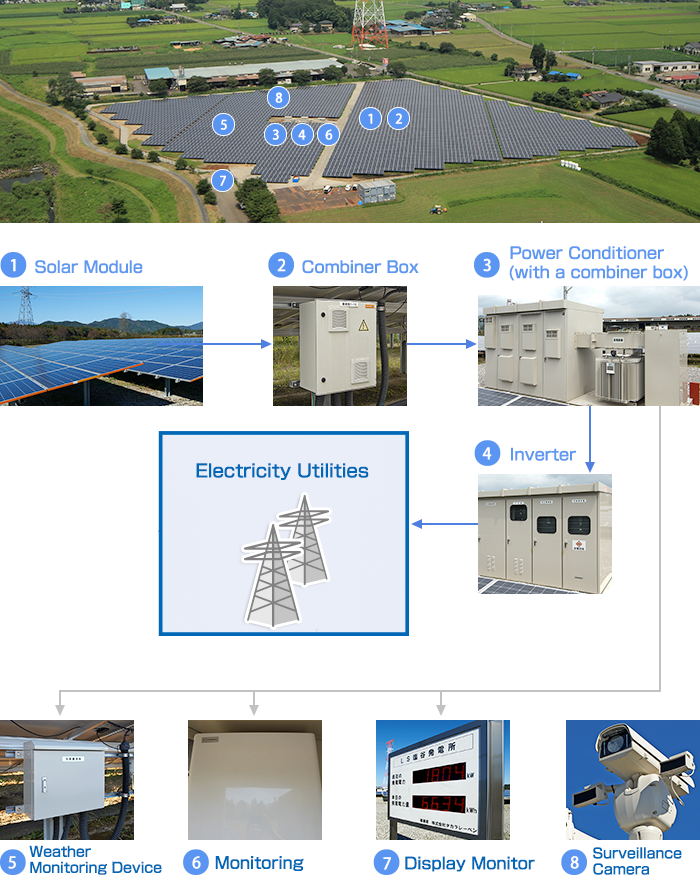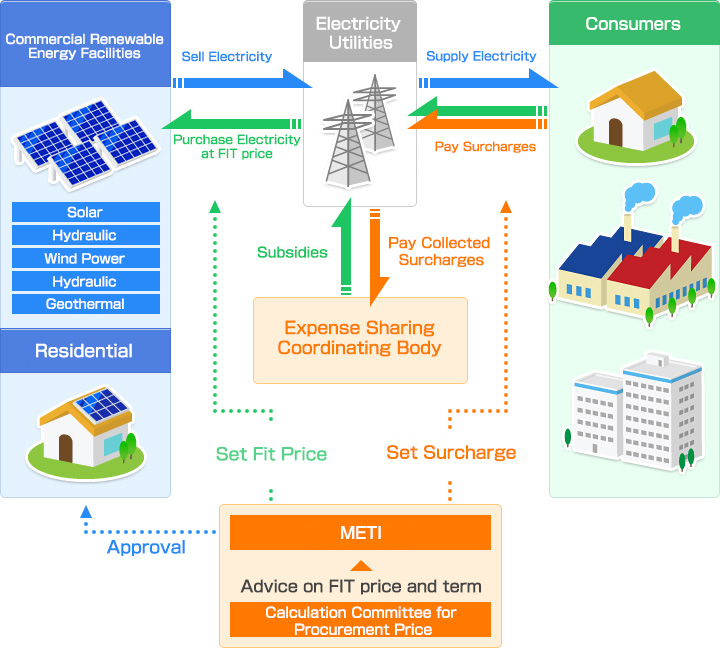- Basic Policy
- Invest in Solar Energy Facilities
- Investment Strategy
- Financial Strategy
- Governance
- Sustainability Policy

Invest in Solar Energy Facilities
TIF continue to invest in solar energy facilities since we foretasted that solar energy serves as a major supplier of renewable energy in mid to long-term.
In additional, invest target of TIF are currently operating solar energy facilities with Feed-in-Tariff (FIT) applications.
In additional, invest target of TIF are currently operating solar energy facilities with Feed-in-Tariff (FIT) applications.
About Solar Energy Generation
Since solar energy facilities does not require fuel and easy to maintain, it is expected to provide stable power generation despite concerns of costs, stability, and efficiency of power generation.
From a perspective of developing a land and facility, large-size solar energy facility with panel output of 1MW or more (referred as Mega-Solar) requires approximately a year for development while other renewable energy facility requires few years for assessing the environment and meeting local representatives.
Thus operation and developments of solar energy facilities poses low risks compare to other power generations In addition, New Energy and Industrial Technology Development Organization (NEDO) launched the project to reduce costs of solar energy and aim to archive 7Yen/kWh in 2030.
From a perspective of developing a land and facility, large-size solar energy facility with panel output of 1MW or more (referred as Mega-Solar) requires approximately a year for development while other renewable energy facility requires few years for assessing the environment and meeting local representatives.
Thus operation and developments of solar energy facilities poses low risks compare to other power generations In addition, New Energy and Industrial Technology Development Organization (NEDO) launched the project to reduce costs of solar energy and aim to archive 7Yen/kWh in 2030.
■Increasing Solar Energy Ratio and Expanding Markets
According to the Ministry of Economy, Trade, and Industry, solar energy (panel output of 10kw or more) accounts 95.8% of total installed renewable energy as of the end of October 2015.
In addition, foretaste released on July 2015 stated that total output of 64GW (non-residential accounts 55GW) of solar energy will be installed on 2030.
In addition, foretaste released on July 2015 stated that total output of 64GW (non-residential accounts 55GW) of solar energy will be installed on 2030.
Secondary Market
Along with newly introduced and permitted solar energy facilities, there is a possibility of boosting a transfer of pre-completed or in-operation facility.
The establishment of the Listed Infrastructure Market is expected to boost the secondary market.
The establishment of the Listed Infrastructure Market is expected to boost the secondary market.
Overview of Solar Energy
In basic, solar energy cells convert sunlight to electricity.
Basic components of solar energy facilities are as follow.
Basic components of solar energy facilities are as follow.
Components of Solar Energy Facility(LS Shioya)

| ①Solar Module | Solar module is consisted by dozens of photovoltaic cells (PV). PV convert sunlight into electricity |
| ②Junction Box | Collect DC generated on PV and Supply to combiner box |
| ③Combiner Box | Collect and transfer DC from multiple junctions to power conditioner. |
| Power Conditioner | Convert DC into AC |
| ④Inverter | Transfer electricity to Grid company |
| ⑤Weather Monitoring Device | Measure insolation and temperature to monitor efficiency of PV generation |
| ⑥Monitoring | Panel monitors generated energy |
| ⑦Display Monitor | Display amount of generated energy. |
| ⑧Surveillance Camera | Surveillance sites 24/7 in case of emergency. |
| ①Solar Module | Solar module is consisted by dozens of photovoltaic cells (PV). PV convert sunlight into electricity |
| ②Junction Box | Collect DC generated on PV and Supply to combiner box |
| ③Combiner Box Power Conditioner |
Collect and transfer DC from multiple junctions to power conditioner. Convert DC into AC |
| ④Inverter | Transfer electricity to Grid company |
| ⑤Weather Monitoring Device | Measure insolation and temperature to monitor efficiency of PV generation |
| ⑥Monitoring | Panel monitors generated energy |
| ⑦Display Monitor | Display amount of generated energy. |
| ⑧Surveillance Camera | Surveillance sites 24/7 in case of emergency. |
Feed-in Tariff (FIT)
■Introduction of FIT
FIT requires the utility company to purchase electricity generated by renewable energy sources at the fixed price for the certain period.Operating party must obtain approval from an authority on renewable energy facility and sign an agreement with utility film.
FIT is intended to prompt investment on renewable energy generation by securing a cost of construction of facilities.
FIT is intended to prompt investment on renewable energy generation by securing a cost of construction of facilities.
■Basic principle of FIT
The purchasing utility company collects the renewable energy levy together with the electric charge from the end user of the electric power as a source of funds to purchase the electric power by the purchasing electric power company and the cost-sharing adjustment agency collects renewable energy We collect the payment based on the levy and make payment according to purchase performance to each purchasing electric power company


Source:Agency for Natural Resources and Energy at METI






